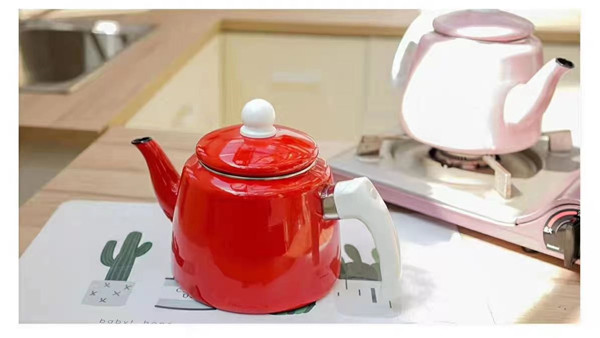Water stability of enamel frit for cookware
The water erosion resistance of porcelain enamel is very strong. Cold water has almost no corrosive effect on the enamel. Only hot water or water vapor will corrode the enamel layer very slightly. But when the water contains dissolved substances, especially when it contains compounds such as carbonic acid or carbonate, it will slightly corrode the porcelain layer.
The stability of enamel frit to water depends on the relative content of SiO2 and alkali metal oxides K2O, Na2O, etc. The increase in SiO2 content increases the water corrosion resistance. The order of the influence of alkali metal oxides on water corrosion resistance is: Li+
 When alkali metal oxides or other second-order metal oxides are used to replace part of SiO2, the effect of enamel on the chemical stability of water is smaller than that of alkali metal oxides. Among the second-order oxides, BaO and PbO have the strongest effect on reducing the chemical stability of enamel to water, followed by MgO and CaO. However, if PbO is used to replace part of the alkali metal oxide as a flux, it will help improve the chemical stability of the enamel to water.
When alkali metal oxides or other second-order metal oxides are used to replace part of SiO2, the effect of enamel on the chemical stability of water is smaller than that of alkali metal oxides. Among the second-order oxides, BaO and PbO have the strongest effect on reducing the chemical stability of enamel to water, followed by MgO and CaO. However, if PbO is used to replace part of the alkali metal oxide as a flux, it will help improve the chemical stability of the enamel to water.
The water and acid resistance of borosilicate and aluminosilicate enamel is very good.
The ability of enamel to resist water vapor is almost equal to the ability to resist water corrosion.
The stability of enamel frit to water depends on the relative content of SiO2 and alkali metal oxides K2O, Na2O, etc. The increase in SiO2 content increases the water corrosion resistance. The order of the influence of alkali metal oxides on water corrosion resistance is: Li+

The water and acid resistance of borosilicate and aluminosilicate enamel is very good.
The ability of enamel to resist water vapor is almost equal to the ability to resist water corrosion.